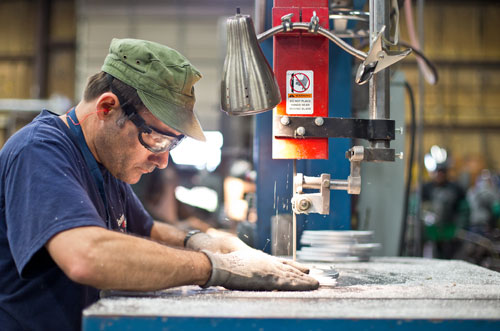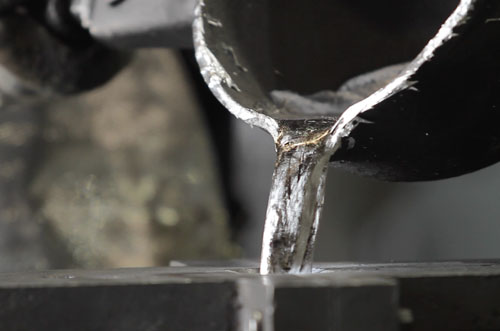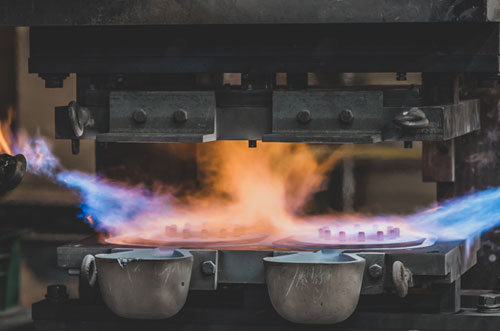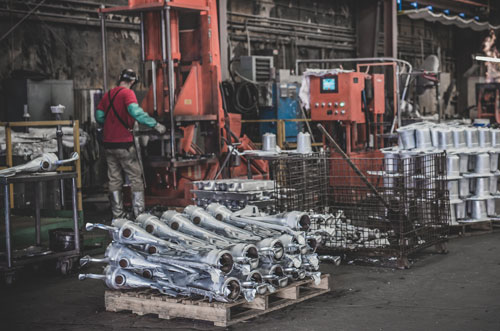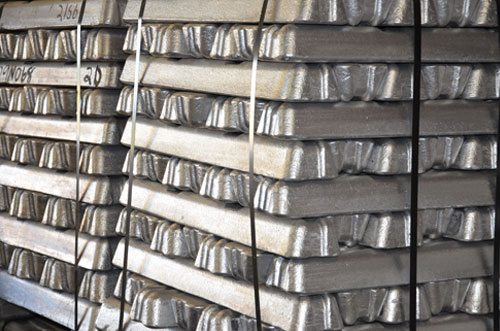OUR PROCESS
AFTER CREATING THE MOLD, WE TAKE IT TO THE FOUNDRY
- At LA Aluminum, we melt only the highest-quality certified aluminum alloy ingots in our foundry. We specialize in casting alloy A356, though we also work comfortably with other alloys.
- We begin by placing aluminum ingots into crucibles and heating them to approximately 1,350 degrees Fahrenheit. Additionally, our melting system handles up to 5,600 pounds per hour.
- Next, we preheat the molds and coat their internal surfaces with a refractory material. We then prepare any inserts and assemble the necessary cores.
- In addition, we maintain strict temperature control throughout the pouring process. To ensure accuracy, we rely on thermocouples and infrared temperature sensors.
- Lastly, we inspect and test first articles—initial castings from a new tool—to ensure they meet our quality standards before sending them to you for evaluation.
- In conclusion, once you approve the first articles, we proceed with full production using the finalized molds.
Our foundry specializes in permanent mold casting, also known as gravity die casting or permold. We employ three primary casting method variations: static pour, tilt pour, and reverse tilt pour.
In the permanent mold casting process, we use gravity to feed molten aluminum into a reusable mold or die, typically made from 4140 steel or iron durabar.
With the static pour method, we place preheated molds into a stationary base. Then we pour molten aluminum into a spout at the top of the mold. After a set time, we open the mold and remove the casting.
For the tilt pour method, we position the molds horizontally in a hydraulically actuated tilt machine. Then we ladle aluminum into pour cups attached to the mold. An operator activates the machine, which tilts vertically to allow the aluminum to fill the mold cavity. After a set time, a programmable control returns the mold to the horizontal position. The mold opens to remove the castings.
In the traditional tilt pour method, the mold parting line sits perpendicular to the floor. In contrast, the reverse tilt pour method orients the parting line parallel to the floor. Therefore, this method works especially well for castings with radial geometry, such as wheels, hubs, and compressor housings. Likewise with non-radial parts like brake calipers.
- Some part designs require a steel core or a sand core (also called a shell core) to maintain the inner dimension or hollow section of the part.
- Steel cores typically operate mechanically within the mold and allow for reuse.
- Sand cores or shell cores are placed in the mold before closing, a process known as semi-permanent mold.
- Lastly, we remove the sand core from the casting by using a vibratory process that breaks it out—commonly referred to as “shake out.”
- After that we remove the gates and risers, we carefully load and stage the castings for heat treatment.
- We annually certify our Drop Bottom and age oven heat treat ovens to ensure uniform temperature.
- The temperature and duration of the heat treatment determine the hardness and mechanical properties of the alloy. Therefore, we typically heat treat the castings to a T51 or T6 condition.
- Finally, we verify the results by testing the casting’s hardness to match your specifications.
Have a Question?
Talk to one of our specialists with any questions you may have.
"*" indicates required fields

